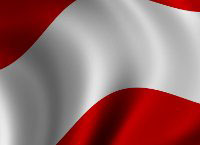Austria has a varied cuisine that has evolved over the centuries. The country is known for its delectable and creamy dishes that constitute the ideal comfort food for many around people the world. Many Austrian specialties have originated in countries belonging to the former monarchy, including Hungary, Italy and Bohemia. But while the dishes may have diverse origins, many of them were perfected in Austria. Here are 5 foods you must try when living in Austria. Food is a passion in this country, and you can be sure to find any of these dishes in luxury restaurants and street side cafés alike.
Knodel
Knodel is an integral part of Central European cuisine and a much-loved side dish and desert in Austria. Knodel can be described as dumplings, made from potato dough or flour, without any yeast. They come in both the sweet and savory varieties.Savory knodel are made with a base of flour, egg and dried bread. Other ingredients such as bacon, ham, spinach or cheese can then be added. These form a dish in themselves, but can also be served along with roasted meat, soups and stews. In sweet knodel, a common ingredient is quark, which is a special type of cheese. A fruit filling is also generally added, along with a sprinkling of powdered sugar and crisp breadcrumbs. Marillenknodel and zwetschkenknodel, which are made from apricot and plums respectively, are especially popular in Austria.
Liptauer cheese spread
This is a must-try if you want an authentically Austrian culinary experience. It is a type of spicy cheese spread made from goat or sheep milk cheese. It is also sometimes made with cottage cheese. In traditional recipes, the cheese is mixed with butter, sour cream, margarine or beer, and chopped onions. The spice comes mainly from a generous addition of ground paprika, and other ingredients like parsley and caraway seeds may also be added. Some recipes call for the addition of capers, anchovy paste or mustard.
Liptauer cheese spread is usually served as an appetizer in restaurants, and is also a popular food in taverns and pubs. It is served with crackers, sandwiches or toast. It may also be used as filling in hard-boiled eggs. Many shops sell readymade Liptauer cheese spread in small foil packets.
Wiener Schnitzel
The Wiener schnitzel is a breaded veal cutlet. The veal is thinly hammered and then dipped in flour, egg and breadcrumbs, and fried until golden brown. It is usually eaten after drizzling some lemon juice on top. The dish, which has a bit of a controversial history, has a few rules regarding its preparation. The veal must be hammered to a thickness of about 4mm before coating with flour, eggs and breadcrumbs. Also one should avoid pressing the crumbs into the meat, as they need to stay dry. While frying, the schnitzel must swim in the fat for even cooking. The tradition in Austria is to serve Wiener schnitzel with an accompaniment of kopfsalat, lettuce with a sweet vinaigrette dressing, and potato salad. It may also be eaten with rice.
Tafelspitz
When literally translated, tafelspitz means ‘the point of the table’. It is a dish of boiled beef in broth, and is typically served with a side of horseradish. It is believed to have been the favorite dish of the Austrian Hungarian Emperor Francis Joseph. The dish is also popular in neighboring Bavaria. The recipe calls for a freshly cut hind portion of beef. The beef is boiled with a mix of root vegetables and spices, and served with roasted potato slices or horseradish and sour cream. There are many variations of this dish, and most Austrian restaurants feature it on their menus.
Sachertorte
Invented in 1832 by Franz Sacher, the Sachertorte is a type of chocolate cake and a famous Viennese specialty. It even has a special day dedicated to it – the 5th of December is National Sachertorte Day. This delicacy consists mainly of a chocolate cake topped and coated on the sides with a thin layer of apricot jam. It is traditionally eaten with a serving of unsweetened whipped cream. The original recipe was known to have two layers of apricot jam, but the latter one, also known as the Eduard-Sacher-Torte, has only one and has become the standard today.

